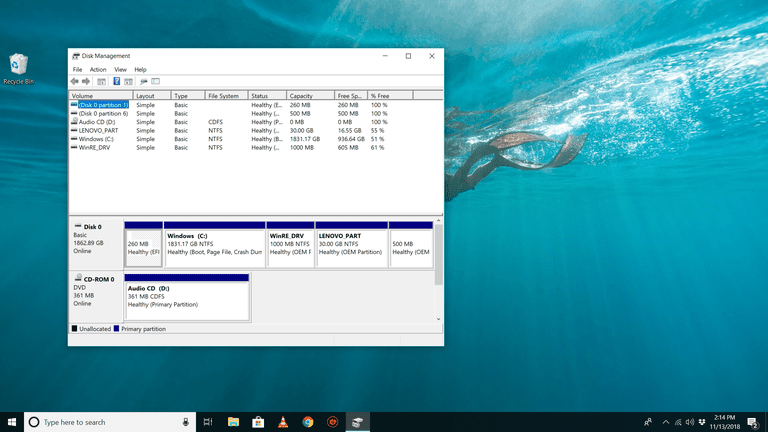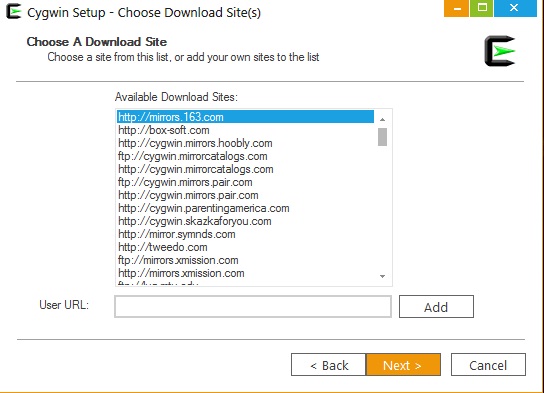
- #Run cd from command prompt windows 10 windows 10
- #Run cd from command prompt windows 10 Pc
- #Run cd from command prompt windows 10 windows
If you want to pin the app, use these steps: Once you complete the steps, the CMD shell will run with administrative privileges.
#Run cd from command prompt windows 10 windows
Turn off the Replace Command Prompt with Windows PowerShell in the menu when I right-click the start button or press Windows key + X toggle switch.Īfter you complete the steps, the Command Prompt options will be available in the Quick Link menu. If the option is not available in the Start button menu, use these steps: Once you complete the steps, the command line environment will launch on the Desktop. Select the Command Prompt (admin) option to open the app with administrator privileges.Select the Command Prompt option to open the app with standard privileges. Quick tip: You can also open the menu using the Windows key + X keyboard shortcut. To open Command Prompt from the Quick Link menu, use these steps:
#Run cd from command prompt windows 10 windows 10
You can also start the command shell from two different places using the Windows 10 taskbar. (Optional) Click the Run as administrator option from the context menu on the right side.Īfter you complete the steps, Command Prompt will open.Search for Command Prompt and select the top result. Quick tip: You can quickly open the experience with the Windows key + S keyboard shortcut. To open the Windows 10 command console from the search box, use these steps: Once you complete the steps, the command shell will start, allowing you to run commands and scripts on Windows 10. (Optional) Right-click the Command Prompt option and select Pin to Start to make the app quickly accessible from the tile section.(Optional) Right-click the Command Prompt option, select the More submenu, and choose Run as administrator. Quick tip: You can quickly jump to the folder location by clicking the letters, separating each section, and selecting the W. To launch Command Prompt from the Start menu, use these steps:Ĭlick the Windows System folder from the "All apps" list. Replace Whitson with the name of your user folder at the end of that command to get the file on your desktop.How to open Command Prompt with Start menu Get-ItemProperty HKLM:\Software\Microsoft\Windows\CurrentVersion\Uninstall\*, HKLM:\Software\Wow6432Node\Microsoft\Windows\CurrentVersion\Uninstall\*, HKCU:\Software\Microsoft\Windows\CurrentVersion\Uninstall\* | Select-Object DisplayName, DisplayVersion, Publisher, Size, InstallDate | Format-Table -AutoSize > C:\Users\Whitson\Desktop\ProgramsList.txt Then run the following command-it's long, but it's just one copy-and-paste command, which'll grab the contents of three different registry keys and output them to a text file on your desktop: Open the Start menu, search for PowerShell, and launch a new window. Unlike the others on this list, however, this command must be run from PowerShell, a newer, more powerful tool built into Windows.
#Run cd from command prompt windows 10 Pc
Before wiping your drive, you can grab a list of every program installed on your PC with one command. When you get a new laptop or do a clean reinstall of Windows, you're likely to forget some of the tools you use every day and take for granted.

Get a List of Every Program Installed on Your PC There's a lot you can do with this command once you get familiar, but a little knowledge can take you pretty far. You can replace this with any text you want. -original appends the word original to the end of every file-perfect if you plan on copying the photos somewhere else for editing but want to note which ones were the original pictures.You can use more or fewer question marks to keep more or less of the original file name. ? tells the command to keep the first six characters of the original file name (because there are six question marks).*.* means "any file in this folder." You could adjust this to say IMG*.* to limit it to any files that start with IMG, or *.jpg for any JPEG files.rename tells the system to rename the files you're about to narrow down.Leaving you with files named IMG_001-original.jpg, and so on. You'll need those quotes if your file path has any spaces in it, so don't forget them.įrom there, you can run something like the below to rename all the files in the folder: Open a command prompt and use the cd command to navigate to the folder where those files are stored, like so:Ĭd "C:\Users\Whitson\Photos\Christmas 2020"

For this, you can turn to the command line. But maybe you want to do the opposite-keep the existing file name but append a word to the end.


 0 kommentar(er)
0 kommentar(er)
